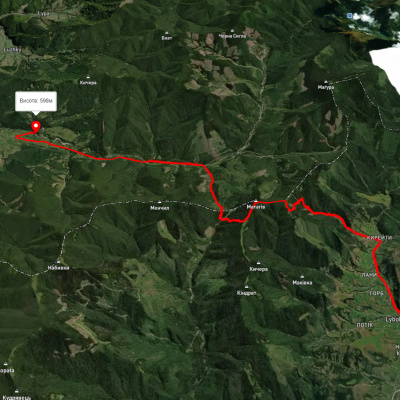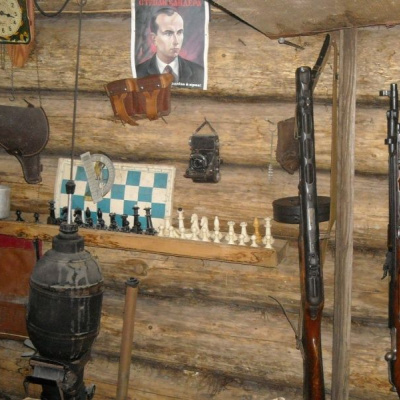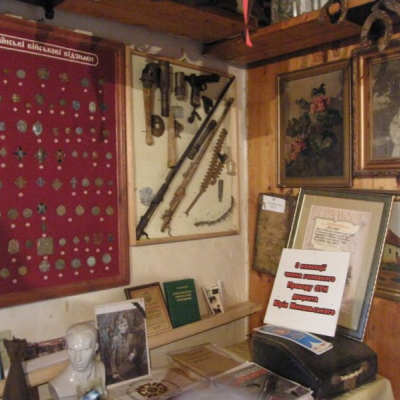Yuriy Mykolsky Museum of the Liberation Struggle, Slavske
An interesting tourist attraction, which does not depend on the season, presence or absence of snow, is located in Slavske at 2 Sichovykh Striltsiv Street - the Carpathian Museum of the Liberation Struggle of Ukraine by Yuriy Mykolskyi. Sometimes a dozen excursion groups can visit this place in a day. The owner himself calls his "brainchild" a modest collection, since he does not follow the canons of museums in the placement of exhibits. Mr. Mykolskyi does not charge for visits and asks that guides who bring tourists here include his museum in their programs free of charge.
Mykolskyi's "collection" is housed in two small houses. Two-thirds of the exhibits are military-themed: orders, helmets, sabers, rifles, shell casings (the largest is from a 30.5-centimeter Austrian mortar), assault rifles, etc. The "peaceful" exposition includes books (the rare "Kobzars" published in 1861, 1907, and 1912 are in a place of honor), various tools, medallions, cups-knives-forks, a bucket of buttons, etc. There are many originals of underground publications of the UPA, including a self-published obituary for the death of Roman Shukhevych. The topic of the liberation struggle is so close to Yurii Mykolskyi that he built his own hiding place in his yard. The owner usually begins an excursion to it with an unexpected tirade.
"Comrade Colonel, a bunker of a gang of bourgeois nationalists has been discovered within a radius of five meters. Try to find it," Mr. Yurii asks with a twist, pretending to be a member of the NKVD special forces. (Indeed, it is not easy to find, especially if you know almost nothing about the UPA). Then Mr. Yurii (now in the role of an underground fighter) approaches the woodpile and speaks quietly: "Stepan, Stepan is me." A small section of the masonry turns out to be a door, with a key somewhere in a cache. "Come in." In the hiding place, almost everything is recreated as it actually happened: a well, a stove, a radio and a walkie-talkie, weapons, a typewriter, gas masks, maps, and many other necessary things. All the local exhibits are originals. Only the figures of Roman Shukhevych, Vasyl Kuk, and the radio operator are fake - the hideout was designed to be a headquarters. Yuriy Mykolsky says that this tour often makes a great impression on foreign tourists, especially Germans and French, and a group of female teachers from Donetsk once said goodbye to the museum owner in a chorus: "She has not died yet and will not die!"
In the mountains, Yurii Mykolskyi found and unearthed shells, grenades, mines, helmets, and insignia of various troops of the two world wars and turned his home into a real museum. Tourists visit him almost every day. To show them the hiding place and the collection, schools organize special excursions to Yurii Mykolskyi's house in Slavske.
It all started more than 30 years ago. Yurii Mykolskyi, a specialist in cable cars, built ski lifts around Slavske. There were a lot of battles in the Carpathians, so during the construction he found interesting military equipment in the ground: ammunition, barrels, grenades. Find after find, and that's how Mr. Yurii started collecting them. Most of the exhibits are from the Oryavchyk and Tatarivka mountains. At first, he came across them by accident, and later he specifically searched for them and excavated them. He assures us that many more interesting things are literally lying in the popular ski resort of Dragobrat.
Mr. Mykolskyi's collection is breathtaking. There is a saber of a Sich Rifleman from Makivka, a shell of the largest Austrian cannon "Merzer" of 30.5 cm caliber of the First World War, various mines and hand grenades, machine gun ammunition, a helmet of a German soldier and an Austro-Hungarian soldier with the inscription "With God - for the King and the Motherland" on the coat of arms, bayonets and luffs. The exhibition includes radio stations of the Red Army, the Wehrmacht, and the U.S. Army. The latter with a full set of codes, which the UPA captured in Volyn from a Polish detachment of the Home Army. There are also other "witnesses" to those wars: a German gramophone, old foreign maps of the Carpathians, lighters made from shell casings, bags, boots, and flasks.
On the wall of the museum hangs a stand with 82 military insignia, ranging from awards for the Sich soldiers Kyrylo Tryliovskyi and Yevhen Konovalets, the Carpathian Sich soldiers of Augustyn Voloshyn, the Polissia soldiers of Taras Bulba-Borovets, the soldiers of the Ukrainian People's Republic army of Symon Petliura, and the Bandera-Shukhevych insurgents. In general, most of the items belong to UPA soldiers. Although the collection is not limited to weapons. There are various ancient things from the life of the Boyko, Hutsul, and Lemko people. A large chest that his grandfather brought from emigration to America. Kharkiv residents donated a fragment of a fossilized tree that is 80 million (!) years old (for example, the Carpathians are 25 million years old).
The most valuable thing here is the first complete edition of Kobzar from 1861. He came across this book, which was one and a half hundred years old, in a bookstore in Prague. When he saw it, he was numb, because the Kobzar was prepared during Taras Shevchenko's lifetime. He paid 350 Czech crowns for this priceless thing.
Yurii Mykolskyi's hideout and museum have become a tourist attraction. In the brochures about Slavske, in addition to sanatoriums and ski lifts, his house is also mentioned. He receives visitors almost every day from all over Ukraine, and there have been guests from St. Petersburg and Moscow. Most often it is the Plast members who come.
The hideout is warm even in winter. After 1945, the Soviet government sent such a large military force to Galicia that the UPA members were forced to build small hideouts and hide in them. At first, the UPA huts were reduced to a hundred, and later to a swarm. Yurii Mykolskyi was interested, found literature, and searched for these bunkers. He has almost a hundred of them on his map. One of the hiding places, near Tukhlia, was designed for a hundred people. The walls are made of stone, but the ceiling is wooden and now collapsed.
The earth is a good insulator, and the hideout is warm even in winter, although it is damp. The insurgents smoked in the "burzhuyka", but only at night or in the fog. Secrecy was the most important thing. There was always a well underground or a stream nearby. The hiding places were set up in the forest or village, in the beer garden of a house or in the yard, with a secret entrance through a stable or a well.
Accommodation around Yuriy Mykolsky Museum of the Liberation Struggle, Slavske:
Які маршрути проходять повз Yuriy Mykolsky Museum of the Liberation Struggle, Slavske?
Пропонуємо пройти такі туристичні (пішохідні) маршрути через/біля Yuriy Mykolsky Museum of the Liberation Struggle, Slavske: с. Славське, через Буковецький перевал до оз. Синевир, с. Тухля, через г. Маківка до смт. Славське, с. Дубина, чере вдсп. Кам'янка, г. Лопата, г. Матагів до с. Тухля, с. Либохори – г. Магура – с. Либохори, с. Либохора, через г. Матагів до с. Козаківка, с. Тухля, через г. Кіндрат, г. Матагів, г. Лопата, г. Кудрявець до м. Сколе
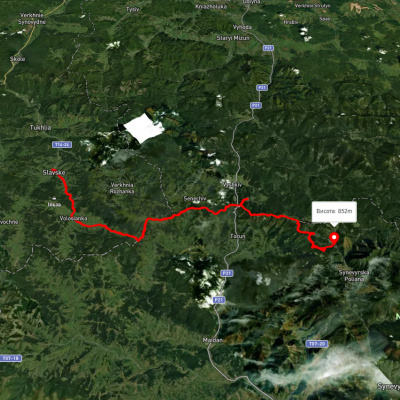
с. Славське, через Буковецький перевал до оз. Синевир
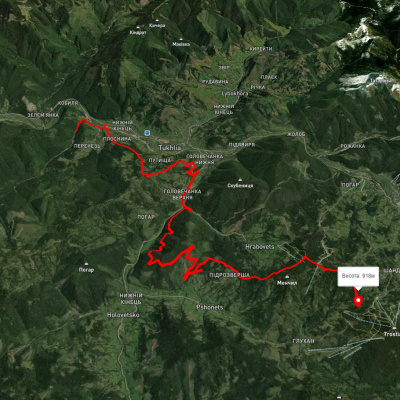
с. Тухля, через г. Маківка до смт. Славське
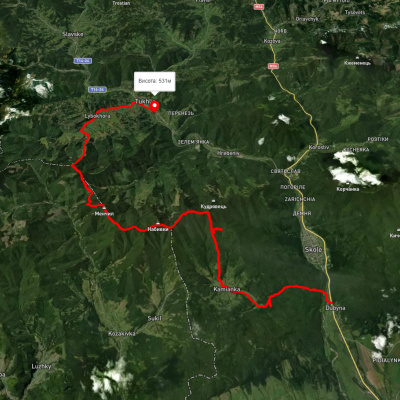
с. Дубина, чере вдсп. Кам'янка, г. Лопата, г. Матагів до с. Тухля

с. Либохори – г. Магура – с. Либохори
